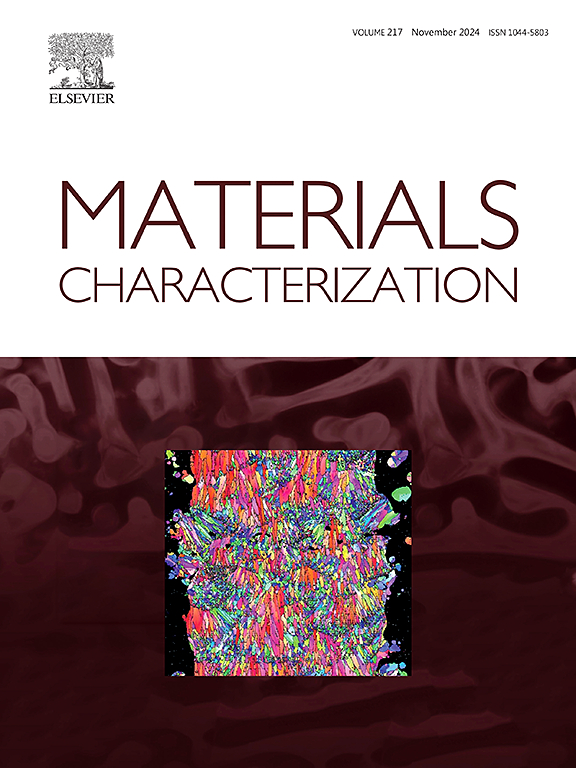Using XeF2 gas and focused ion beam (XeF2-FIB) imaging to contrast and quantify precipitation in metal
IF 4.8
2区 材料科学
Q1 MATERIALS SCIENCE, CHARACTERIZATION & TESTING
引用次数: 0
Abstract
Understanding the type, size, and distribution of precipitates within the microstructure of metals is crucial to elucidating their material properties and evolution. However, many characterisation techniques face challenges in effectively distinguishing precipitates from the surrounding matrix. This study introduces the use of gaseous XeF2 contrast mapping, combined with advanced micrograph processing, to obtain enhanced statistical insights into precipitates and their evolution within steel, Ni, and Zr alloys. In this research, XeF2 gas is employed to induce ion-channelling contrasts using a Ga Focused Ion Beam (FIB) on experimental Fe9Cr1Mo steel, 316H steel, P91 steel, nickel-based Alloy 690 and Zr1Nb alloy. The application of this technique reveals precipitates and substructures with greater clarity, allowing the extraction of key statistical data, including precipitate type, size, shape, and distribution. Compared to conventional methods, this approach offers a significant improvement in 2D precipitate characterisation and evaluation. The results suggest that the XeF2 contrast mapping should be considered a valuable addition to the microscopist toolkit for advanced material analysis.

求助全文
约1分钟内获得全文
求助全文
来源期刊

Materials Characterization
工程技术-材料科学:表征与测试
CiteScore
7.60
自引率
8.50%
发文量
746
审稿时长
36 days
期刊介绍:
Materials Characterization features original articles and state-of-the-art reviews on theoretical and practical aspects of the structure and behaviour of materials.
The Journal focuses on all characterization techniques, including all forms of microscopy (light, electron, acoustic, etc.,) and analysis (especially microanalysis and surface analytical techniques). Developments in both this wide range of techniques and their application to the quantification of the microstructure of materials are essential facets of the Journal.
The Journal provides the Materials Scientist/Engineer with up-to-date information on many types of materials with an underlying theme of explaining the behavior of materials using novel approaches. Materials covered by the journal include:
Metals & Alloys
Ceramics
Nanomaterials
Biomedical materials
Optical materials
Composites
Natural Materials.
 求助内容:
求助内容: 应助结果提醒方式:
应助结果提醒方式:


